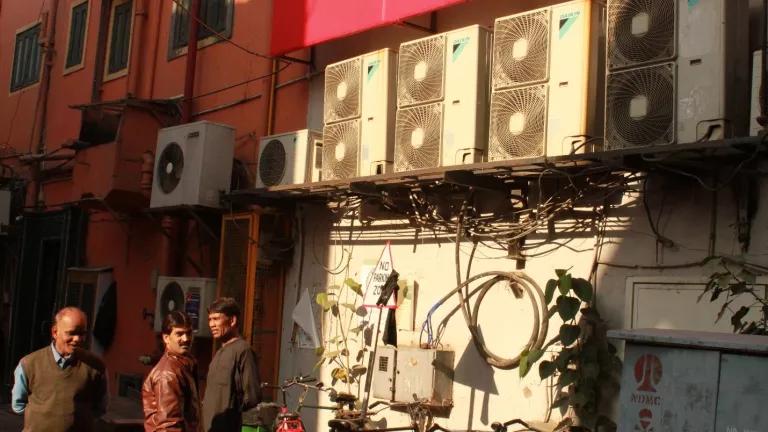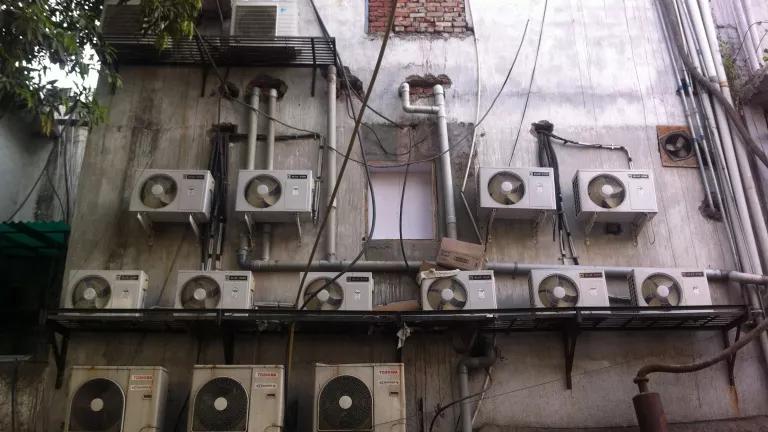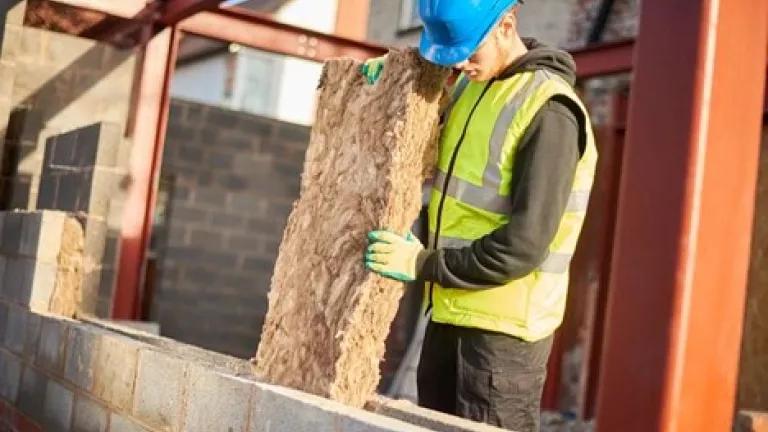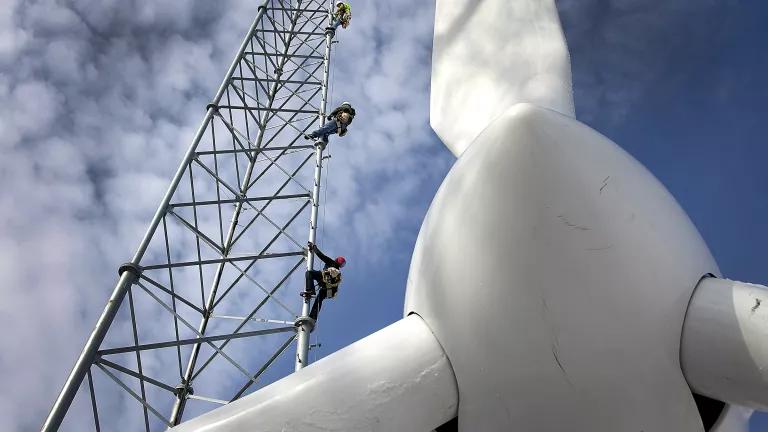
The United Nations Intergovernmental Panel on Climate Change (IPCC) recently released a sobering report on the impacts of rising planetary temperatures. The panel said that global warming above 1.5°C is expected to be catastrophic, particularly for vulnerable populations in developing countries like India. Experts are predicting climate chaos unless leaders sharply reduce fossil fuel use and increase clean energy and efficiency.
Faced with the reality of climate change, India is taking an array of actions on renewable energy, building efficiency, air pollution, heat resilience, super pollutants and more. Last month, on World Ozone Day, Environment Minister Harsh Vardhan released the Draft India Cooling Action Plan (ICAP), a comprehensive document to addresses India’s growing cooling requirements. The plan marks a key milestone in India’s efforts to phase down chemicals used for cooling—including super pollutant hydrofluorocarbons (HFCs) used for air conditioning in cars, buildings and more—under the Montreal Protocol.
India is the first country to develop a national plan to address rising cooling needs while working to reduce demand for air conditioning. Environment Secretary C K Mishra emphasized that the draft plan prioritizes actions that deliver both environmental and socio-economic benefits. The ICAP highlights synergies between India’s cooling program and other environmental and climate change related programs and initiatives, such as the Smart Cities Mission, the National Mission on Enhanced Energy Efficiency, Housing for All, Mission Innovation and others.
ICAP features
The draft ICAP sets goals of reducing overall cooling demand by 20-25% and reducing refrigerant demand by 25-30%. It also aims to reduce the energy required for cooling by 25-40% by 2037. The plan also seeks to train and certify 100,000 service sector technicians by 2022-23, in coordination with the Skills India Mission.
Key features of the ICAP include a synergistic approach to addressing growing cooling demand; involving multiple stakeholders across sectors; linking energy efficiency and the transition to low global warming potential (GWP) refrigerants; a holistic view of policy interventions aligned with economic growth; developing a database on best available nationwide data and inputs from cooling experts.
The ICAP echoes India’s goal of providing sustainable cooling and thermal comfort for all, while securing environmental and socio-economic benefits for society. It includes in its priority list the allocation of funds and support for a targeted program to enable cooling for economically challenged segments, such as cool roofs programs and localized heat action plans. These are areas where NRDC and our partners have been working at the state and city level to reduce cooling load demand and to build heat resilience in vulnerable communities. The draft ICAP also highlights India’s integrated long-term vision for cooling, including reducing cooling demand, refrigerant transition, enhancing energy efficiency and advancing technology options.
ICAP process
The Ministry of Environment, Forests and Climate Change (MoEFCC) developed the ICAP through collaborative process with other branches of government, as well as industry, science and civil society stakeholders. The seven thematic areas for the ICAP include: space cooling in buildings, air-conditioning technology, cold-chain and refrigeration, transport air-conditioning, air-conditioning and refrigeration servicing sector, refrigerant demand and indigenous production, and R&D and production sector—alternative refrigerants. In parallel, a steering committee was formed from representatives stakeholder groups, including ministries and organisations.
Climate change experts have sought strategies and actions for efficient air conditioners, buildings and cool roofs, as well as technological innovation. The ideas include the development and launch of air conditioning and refrigerating appliances that use low-GWP refrigerants without compromising on energy efficiency, and other low-energy cooling technologies. Suggestions have also been made for establishing a collaborative research and development (R&D) platform that would provide a robust ecosystem for promoting sustainable and smart cooling strategies while implementing the Kigali Amendment to the Montreal Protocol for Phase-Down of HFCs.
NRDC, The Energy and Resources Institute (TERI) and key partners have engaged extensively over the past year, including through our comprehensive series Cooling India With Less Warming. Together, we have sought strategies and actions for efficient air conditioners, buildings and cool roofs, as well as technological innovation. Our ideas have included the development and launch of air conditioning and refrigerating appliances that use low-GWP refrigerants without compromising on energy efficiency, and other low-energy cooling technologies. Additionally, we have suggested establishing a collaborative research and development (R&D) platform that would provide a robust ecosystem for promoting sustainable and smart cooling strategies while implementing the Kigali Amendment to the Montreal Protocol for Phase-Down of HFCs.
Meanwhile, MoEFCC and the Ministry of Power recently released a study examining all relevant cooling sectors and identifying the key intervention areas with the highest potential for energy savings and emissions reductions. Titled "Demand Analysis for Cooling by Sector in India in 2027", the study was authored by the Alliance for an Energy Efficient Economy under an Indo-German Energy Forum and the Bureau of Energy Efficiency project. It describes the anticipated growth of cooling demand in India through 2027 in order to calculate the amount of future energy consumption and CO2 emissions.
According to MoEFCC’s Additional Secretary Anil Jain, cooling energy demand is expected to influence the renewable energy agenda of the country, and reports like these ones help leaders better plan their interventions. He emphasized how cooling efficiency can play a large role in delivering overall building energy efficiency. As an example, he pointed to a successful energy efficiency retrofit pilot project with NITI Aayog's Yojna Bhavan. The first round of retrofits resulted in a 20% reduction in energy demand, while the second round—when the air conditioning chillers were replaced—further reduced the total energy demand by 30%.
NRDC and our partners applaud all stakeholders involved in developing the draft India Cooling Action Plan. We acknowledge the immense effort required to create such a document, and we reiterate our support to India as it tackles critical issues surrounding cooling.
Next month, representatives from India will join delegates from around the world in Quito, Ecuador for the 30th Meeting of the Parties to the Montreal Protocol. There, world leaders will have the opportunity to act on super pollutants generated by cooling. Climate experts are urging parties to take faster action to eliminate heat-trapping HFCs, which could account for 0.5°C of global warming by 2100.
Portions of this blog post were published in an opinion piece in the Economic Times.



